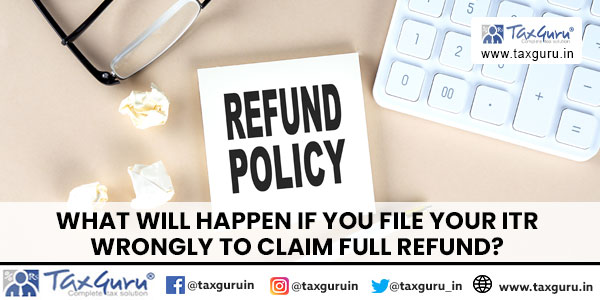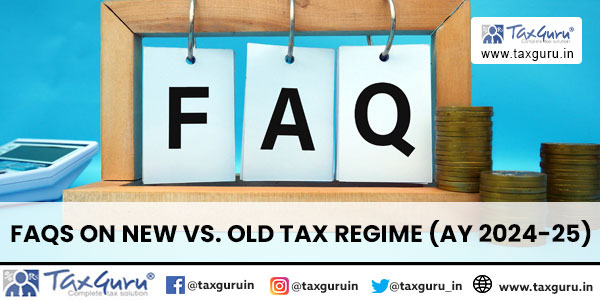CHAPTER 1
INTRODUCTION
When it comes to development, undoubtedly it can be proclaimed that the change is the only constant[1], which means that the change is inevitable and with the changing circumstances the requirement is to adapt and adopt such policies which favour the ongoing scenario. It is a prominent task of the legislature to introduce a policy which works in the direction of betterment of citizens as well as the whole nation.
With the aim of uniformity and transparency in the arena of tax, the government of India introduced the new system of indirect tax, which subsumed the multiple taxes levied by the centre and the state into one form, further known as Goods and Services Tax (GST). It is a uniform tax rate fixed for every goods and services, without varying its amount state-wise[2]. It is one of the major policies implemented by the government because future of the country depends on the proper functioning of GST, as it was assumed that it will be beneficiary in the long run basis and will aid the country in overall development with respect to the competitive world.
After the implementation, the major issue is to govern the whole nation in accordance with the new system of tax and to make such body that can act as a watchdog on the proper functioning of GST. With the inclusion of Article 279A through the Constitution (One Hundred and First Amendment) Act, 2016[3], the government of India introduced the Goods and Services Tax Council (GST Council), directed to make the decision in relation to the newly implemented GST laws and take cognizance in relation of issue arising from such decisions. This body consists of different members[4].
CHAPTER 2
STATE AUTONOMY BEFORE GST REGIME
The Constitution of India has framed in such a manner that it favours the state autonomy in the matter of levying taxes, for revenue purpose. The Schedule 7, List II[5] empowers the state to levy Value Added Tax (VAT) duty at every stage (from manufacturing of goods to handing it over to the consumer). Also, the state had the full discretion to fix the amount of tax on different goods and services, without any interference of centre unless the state adopts ultra vires policy[6]. Looking at the stats clearly shows that, this system was booming the state revenue by increasing the numbers of total collection of tax every year[7].
Although the system was very effective and aiding the country by collecting ample of revenue, the closer look shows the serious lacuna of non-uniformity and lack of transparency in the process of levying taxes. Maybe it will make the nation monetary stable but there is no doubt that it may also affect the nation in other aspects.
CHAPTER 3
HARMONIOUS APPROACH OF GST COUNCIL
The disagreement of the states to follow the GST regime became the major issue of concern. Manufacturing states like Gujarat, Tamil Nadu were highly disappointed by the decision of the legislature[8], the basic criticism holds that change in the arena of taxation not only infringes the power of autonomy given by the framework of the constitution, but also resulting in heavy loss in the collection of revenue. It was also pointed out that it will ultimately affect the process of development in an abysmal way.
From this point it became very important to convince the states to co-operate with the decision of the policy-makers because it was initially predicted that new regime would only become effective on the long run basis and after several years of implementation, policy would payback all the losses incurred and aid the nation to accelerate in the path of development. But for all this, the basic requirement is the combined effort of Centre and State[9].
In this line the inclusion of GST (Compensation to States) Act[10] work as the well-balanced decision of the council in dealing with the ongoing disagreement. By this act, the centre agreed to pay the revenue losses incurred by the states in relation to the implementation of GST Laws, for 5 years.
There is one more trump card played by the council in the line to get the confidence of the states in relation to GST. This one is purely based on interpretation, as according to the Article 279A (9)[11] of Indian Constitution, the council provided the two- third of the voting rights to the states, making the stand of state governments prevailing in the process of deciding any matter.
CHAPTER 4
PRESENT SCENARIO IN GST REGIME
The recent 25th meeting of GST Council held on January 18, 2018, clearly shows that council is positively considering the issue faced by the industries of different states and improving the law to increase the fiscal revenue[12]. According to the report, council reduced the tax rate of 29 goods and 53 categories of services[13]. By the recent recommendations some of the important sectors such as Healthcare, Transportation got necessary benefits.
On looking the statistics, shows that the centre had released 25,000 crores[14] (approx) until the last month of 2017. On the other hand, with monthly fluctuation, the total collection of revenue is 86,703 crores[15] till the second week of January, 2018.
CHAPTER 5
CONCLUSION
GST is a fresh modification in the arena of indirect tax and not even completed one year of implementation; this makes it really tough to evaluate its efficacy on Indian economy. But from above discussion one thing is clear and unclouded that both the centre and the state are fully indulge in the proper implementation of GST, showing the strong illustration of cooperative federalism. The decision of providing the revenue loss to different states is risky but positive approach adopted by the Council, which signifies the faith that government has on GST. GST collection is less in comparison to the older format, and this will take time to get desired pace.
The betterment of whole nation is the only reason for infringement of State Autonomy.
[1] One of the quote by Greek philosopher “HERACLITUS”.
[2] The Hindu, THE GST OF IT, 2017, P.No. 09
Available At- http://www.thehindu.com/migration_catalog/article14544050.ece/BINARY/The%20GST%20of%20it:%20Your%20queries%20on%20the%20Goods%20and%20Services%20Tax%20answered%20by%20The%20Hindu (Last Visited- 21/01/18)
[3] Ministry of Law and Justice, THE CONSTITUTION (ONE HUNDRED AND FIRST AMENDMENT) ACT, 2016[Government Report], 2016, P.No. 03
Available At- http://lawmin.nic.in/ld/The%20Constitution%20(One%20Hundred%20and%20First%20Amendment)%20Act,%202016.pdf (Last Visited – 20/01/18)
[4] According to Article 279 A of Constitution of India, GST Council consist of a) Union Minister- Chairperson, b) The Union Minister of states in-charge of revenue of finance, c) The Minister in-charge of finance or taxation or any other Minister nominated.
[5] Ministry of Law and Justice, Article 246 of Indian Constitution (Seventh Schedule) [Government Report], 1949, P.No. 07
Available At – http://lawmin.nic.in/olwing/coi/coi-english/Const.Pock%202Pg.Rom8Fsss(35).pdf (Last Visited- 20/01/18).
[6] IAS Parliament, States’ Right to Fiscal Autonomy v. Uniformity in Taxation, 2017
Available At- http://www.iasparliament.com/blogs/pdf/states-right-to-fiscal-autonomy-vs-uniformity-in-taxation (Last Visited- 25/01/18)
[7] Department of Sales Tax, State Sales Tax Collections(VAT) since 2006-07 [Government Report], 2013
Available At – http://mahavat.gov.in/Mahavat/Controller?aboutUs=MyFold/ABOUT%20US/STATISTICS/Comparative_Statement/tax_collection_other_states.html (Last Visited- 21/01/18).
[8] Rakesh Nangia and Rajat Mohan, India: GST Impact and the States, (2017)
Available At- http://www.mondaq.com/india/x/533716/sales+taxes+VAT+GST/GST+Impact+And+The+States (Last Visited- 21/01/18).
[9] Jai Ganesh M. Murugavelu, GST the Inroads for Financial Cooperation between The Centre and The States, 2016, P.No. 05, Bharati Law Review
Available At- http://docs.manupatra.in/newsline/articles/Upload/2184C25A-2A10-447A-BAFE-04C09C9104FB.pdf (Last Visited- 26/01/18).
[10]Ministry of Law and Justice, The GOODS and Services Tax (Compensation to States) Act,2017 [Government Report], 2017, P.No. 04
Available At – http://gstcouncil.gov.in/sites/default/files/GST%20(Compensation%20to%20States)%20Law.pdf (Last Visited- 23/01/18).
[11]Ministry of Law and Justice, Article 246 of Indian Constitution (Seventh Schedule) [Government Report], 1949, P.No. 08, SS.-09
Available At – http://lawmin.nic.in/olwing/coi/coi-english/Const.Pock%202Pg.Rom8Fsss(35).pdf (Last Visited- 26/01/18).
[12]Central Board of Excise and Customs, 25th GST Council Meeting, 2018
Available At- https://www.indiafilings.com/learn/25th-gst-council-meeting/ (Last Visited- 27/01/18).
[13]Central Board of Excise and Customs, Recommendations for Changes in GST/IGST Rate and Clarifications in Respect of GST Rate on Certain Goods [Government Report], 2018
Available At- http://www.cbec.gov.in/resources//htdocs-cbec/gst/press-release-25-council-meeting-2.pdf;jsessionid=C1AEE55857BD4FE34251D8CD70CBD8FC (Last Visited- 27/01/18).
[14]GST Council, Compensation to States After GST Implementation [Government Report], 2017, GST India Guide
Available At- https://gstindiaguide.com/goi-releases-rs-24500-cr-compensate-states-gst-implementation/ (Last Visited- 28/01/18).
[15]Central Board of Excise and Custom, Total Revenue Collection Under GST [Government Report], 2018, Business Standard Budget 2018
Available At- http://www.business-standard.com/article/news-cm/total-revenue-collections-under-gst-for-the-month-of-december-2017-stand-at-rs-86-703-crore-till-24th-january-2018-118012501153_1.html (Last Visited- 28/01/18)
(Author- Zeeshan Ahmed, 4th YEAR, BA.LLB (H.), NATIONAL UNIVERSITY OF STUDY AND RESEARCH IN LAW, (NUSRL), RANCHI)






















